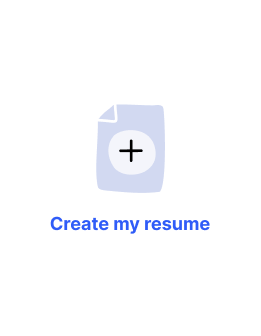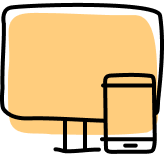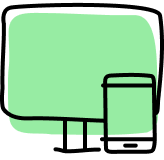51 templates
View Simple Resume Examples
Browse our library of resume examples spanning every career level and industry. See how professionals in your field use simple resume templates to show employers their skills.
Make a Resume in 4 Simple Steps
Endorsed by the Community
Why Job Seekers Trust Our Resume Templates
Enjoy a diverse selection of free downloadable resume templates alongside premium options vetted by recruiters.
Avoid those pesky, time-consuming formatting issues that come with creating a professional resume template on your own.
Create as many resumes as you want from your computer or phone by using our builder’s AI-suggested text tailored to your job title and industry.
Turn your template into a recruiter-approved resume in minutes using Resume Now's AI Resume Builder that guides you step by step.
Why Use a Simple Resume Template?
Great for traditional roles
Industries like finance, healthcare, and law often expect professionalism. A simple template reflects seriousness and aligns with the traditional standards in these fields.
Customize to your needs
Simple resume templates are easy to customize. You can quickly adjust the layout and headers for different job applications without worrying about complex formatting issues.
Compatible with applicant tracking systems (ATS)
ATS software can struggle with overly designed resumes. Simple templates are optimized to pass through these systems, ensuring your resume is read by both machines and hiring managers.
Easy to use
Our simple resume templates come preformatted, saving you time and ensuring your resume looks professional, no matter how much content you add or edit..
How to Create a Resume With a Simple Resume Template
Header
At the top of your resume, list your contact information. Include your full name, city and state, phone number, email address, and professional website, portfolio, or LinkedIn profile, if applicable.
Professional summary or resume objective
Begin your resume’s content with a short summary of your career that highlights your most relevant experience and skills. Emphasize achievements or focus on growth goals to establish a strong tone for the rest of your resume.
Work experience
List your past roles in reverse-chronological order, beginning with the most recent. Include relevant details such as the employer’s name, your title, and the dates of employment. In a few action-oriented bullet points, describe your relevant achievements and use metrics to outline your impact.
Skills
List the skills that have prepared you to achieve in the role. These should include technical expertise and hard skills, as well as interpersonal skills and soft skills that contribute to your efficiency and working style.
Education
List your degrees in reverse-chronological order. If you’ve graduated from college, you can omit your high school diploma. Include relevant coursework and academic achievements if you’re in the early stages of your career.
Simple Resume Templates FAQ
Last Updated: October 08, 2025
Yes, you should consider using a simple resume template if you want a clean, professional design that emphasizes your qualifications without distractions. Simple templates are ideal for industries that prioritize professionalism, such as finance, healthcare, law, and construction.
They are also great if you need an ATS-friendly resume that passes through automated hiring systems. A simple template keeps the focus on your skills and experience, making it an excellent choice for most job seekers, regardless of career stage.
Yes, a simple resume template is ideal for job seekers with limited or no experience, such as recent graduates. Focus on highlighting your education, skills, internships, or volunteer work. You can also move sections around to create a functional resume format that emphasizes your skills rather than work history, making your qualifications stand out.
A simple resume should include key sections: your contact information, a resume summary or objective, work experience listed in reverse-chronological order, a skills section, and your education.
Optional sections like certifications, volunteer work, or languages can be added to enhance your resume, but the goal is to keep the design clean and focused.
The do’s and don’ts of a simple resume include:
- Do: Keep your layout clean and simple, focus on relevant qualifications, tailor your resume for each job, and make sure it’s ATS-friendly.
- Don’t: Avoid overly complex designs, irrelevant personal details, and cramming too much information. Stick to a concise, professional tone and avoid large blocks of text.
By keeping these tips in mind, you can help your resume remain simple without losing the reader’s interest
You write a simple resume by including the five basic resume sections, which are:
- Header with your contact info
- Professional summary or resume objective
- Work history
- Skills section — make sure to represent your hard and soft skills
- Education, including listing your degrees
You can go one step further by adding the most relevant optional sections, like language proficiency or volunteer work.
Ultimately, simple resumes are effective in highlighting your key qualifications without overwhelming the reader. Keeping your resume concise and focused helps potential employers quickly understand your strengths.
For more detailed advice, see our guide on how to write a resume.
There are three main formats for simple resumes:
- Chronological: Best for applicants with a steady work history
- Functional: Ideal for career changers, students entering the workforce, or job seekers with gaps in employment
- Combination: A hybrid format that emphasizes both skills and experience, perfect for professionals with a diverse background or at the midlevel of their career
Choosing the right format depends on your level of experience, but in any case, you can use a simple template to help highlight your qualifications.
A basic resume template works well in traditional industries such as finance, healthcare, education, law, construction, logistics, and manufacturing. These fields typically value professionalism and clarity, making a simple design ideal for showcasing your qualifications without distraction.
Unless the job description specifically tells you not to, it is always a good idea to add a cover letter with your resume.
A simple cover letter will help you explain career changes, resume gaps, and short-term jobs. It gives you the space to expand on your experience and demonstrate precisely how you can use your skills to help the employer.
Your cover letter is a vital opportunity to showcase your personality and discuss the aspects of the job that excite you the most. That’s why you’ll want to be smart about choosing a cover letter template that is formatted correctly. Don’t forget to look at plenty of cover letter examples before you write one!
When you’re ready, our Cover Letter Generator will help you create the perfect cover letter to accompany your resume.







Our Templates Are Endorsed by Experts